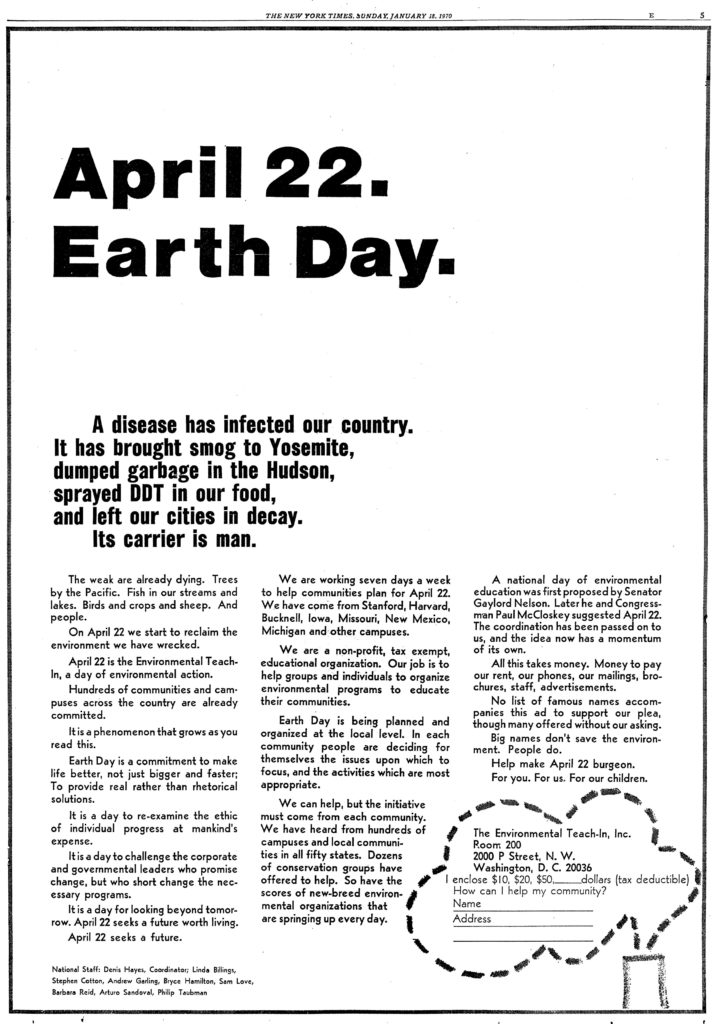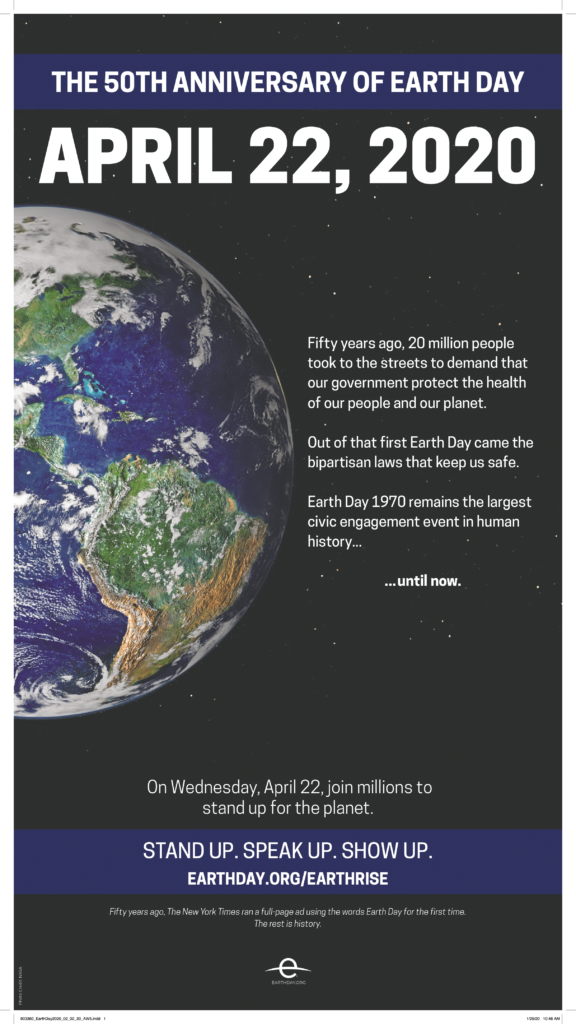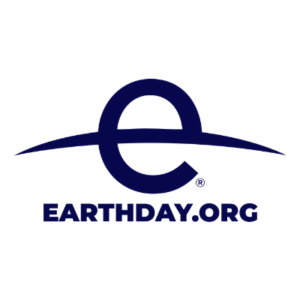Climate Action
Two New York Times ads, separated by half a century, call millions to action
February 1, 2020
On January 18, 1970, The New York Times ran a full-page ad announcing a day of environmental action. This day, which was first named publicly in this ad, became the very first Earth Day.
“On April 22 we start to reclaim the environment we have wrecked,” the ad stated. “Earth Day is a commitment to make life better, not just bigger and faster; To provide real rather than rhetorical solutions… it is a day for looking beyond tomorrow. April 22 seeks a future worth living.”
Fifty years later, almost to the date, Earth Day Network is running another full-page ad inThe New York Times, this one announcing Earth Day’s 50th anniversary on April 22, 2020. The ad ran in The New York Times on Sunday, February 2, to subscribers in the United States, with digital ads running on nytimes.com through the month of February.
“The New York Times ad changed everything,” said Denis Hayes, the coordinator of the first Earth Day, speaking to the 1970 ad. “The ad issued a call to all Americans about the state of our planet. Once it ran, millions of people joined this national effort.”

The first ad also featured a tear-away section that urged readers to send donations to The Environmental Teach-In, Inc., a nonprofit that, according to Hayes, helped “groups and individuals … organize environmental programs to educate their communities.”
The group behind the first Earth Day led their national coordination efforts from a small office in Northwest Washington, D.C., which depended on donations to pull the event off.
“All this takes money,” said Hayes. “Money to pay our rent, our phones, our mailings, brochures, staff, advertisements.”
Luckily for The Environmental Teach-In, Inc., the ad paid off.
“As one measure of how effective the ad was, the ad brought in enough revenue to pay for itself a couple times over,” said Hayes.
Though today’s environmental crisis — climate change — differs from the devastating pollution problem that spurred the first Earth Day, its root cause remains the same: humans.
“A disease has infected our country,” begins the 1970 ad. “It has brought smog to Yosemite, dumped garbage in the Hudson, sprayed DDT in our food, and left our cities in decay. Its carrier is man.”
To fight today’s manmade crisis, we once again need people taking to the streets. Like the first ad, the February 2020 ad is a call to action for our planet. If the first Earth Day helped launch the modern environmental movement, the 50th Earth Day must launch a new era of environmentalism and mark a moment when inaction turns to action.

“For the 50th anniversary of Earth Day, we need everyone participating,” said Kathleen Rogers, president of Earth Day Network. “In 1970, Earth Day mobilized 20 million Americans. Today, Earth Day is global, and every nation on Earth is participating.”
The first Earth Day led to a cascade of environmental legislation: the Clean Water Act, the Endangered Species Act and the establishment of the Environmental Protection Agency. In a year that many consider make-it-or-break-it moment for the trajectory of our planet, April’s mobilization must inspire a similar wave of environmental protections.
Millions will take to the streets to demand change for the 50th anniversary of Earth Day on April 22. Where will you be? Register to join the EARTHRISE movement for the future of our planet, and sign up to receive updates.

